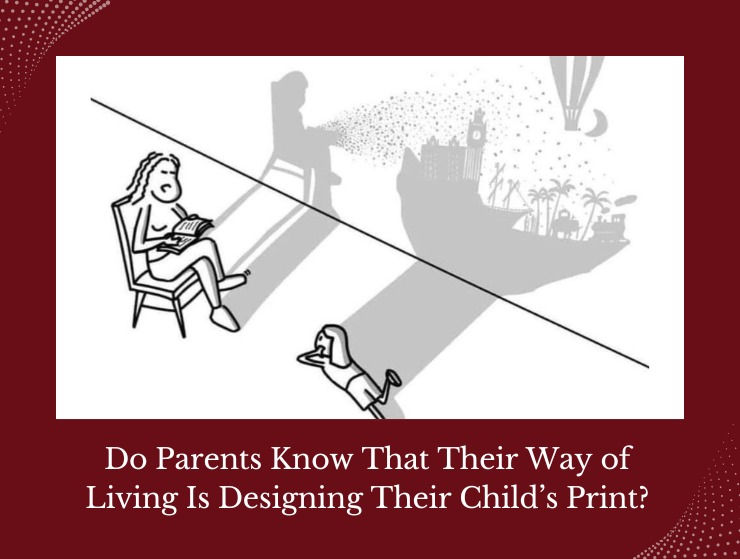Stop Helping So Fast! 💥 Why a Little Struggle Helps Kids Grow
- Sonal Ahuja

- Jul 11
- 3 min read
Updated: Jul 30
The Overpraising Mistake: How Too Much Encouragement Creates Dependence

Meet Rhea: A Cautionary Tale
Meet Rhea, a 4-year-old with the brightest smile in her preschool. Every time she placed a puzzle piece correctly, her mom would clap, cheer, and shower her with praise.
“Wow!” “Amazing!” “You’re a genius!”
Naturally, Rhea loved the praise—who wouldn’t? But over time, something began to shift.
At school, Rhea started hesitating before solving problems. She’d glance at her teachers, waiting for a nod or a smile before moving forward. At home, if no one clapped, she’d leave tasks unfinished.
Her motivation was no longer coming from within—it was now fueled by external approval.
🌱 Why Overpraising Can Backfire
As parents and educators, it’s only natural to cheer our children on. We want them to feel confident and capable. But here’s something important that’s rarely talked about: When praise becomes constant, it can quietly replace a child’s own desire to explore, struggle, and succeed.
Children begin to perform for the reaction, not the experience. Over time, this can lead to:
Avoiding new challenges unless they’re sure of applause
Feeling anxious about making mistakes
Becoming dependent on adult validation
👂 What Children Really Need
Imagine a preschooler building a tall tower with blocks. She places the final block and beams with pride. Instead of saying:
“You’re so smart!”
Try something different:
“You balanced that top block carefully. You figured it out!”
This is called process praise—feedback that focuses on effort, strategy, and persistence. It helps children value the doing, not just the result.
🏫 How We Do It at Amogh Early Learning Centre
At Amogh Early Learning Centre, we witness this every day: children who want to try, fall, and rise again. That’s why our environment is designed to celebrate effort more than outcome.
Our educators are trained to:
Encourage without overpraising
Listen closely to children’s thought processes
Respond in ways that nurture intrinsic motivation—the kind that stays for life
When a child paints, we don’t say:
“That’s perfect!”
We ask:
“What made you choose these colors?”
“Which part did you enjoy painting the most?”
Because real confidence doesn’t come from compliments. It comes from within.
❤️ A Gentle Takeaway for Parents
If you ever find yourself clapping too quickly, pause.
✅ Let your child soak in their own pride
✅ Let them struggle a little
✅ Let them grow without being rescued
Because one day, when you’re not around, they’ll still hear a voice cheering them on—and it will be their own.
🌟 The Importance of Balance in Praise
Finding the right balance in praise is crucial. While encouragement is essential, it should not overshadow a child's ability to learn and grow independently.
When children receive too much praise, they may become reliant on it. They might feel that their worth is tied to the approval of others. This can lead to a fear of failure and a reluctance to take risks.
🧠 Understanding Intrinsic Motivation
Intrinsic motivation is the drive to do something because it is inherently interesting or enjoyable. It is crucial for lifelong learning. When children are motivated from within, they are more likely to engage deeply with their activities.
To foster intrinsic motivation, parents and educators should:
Encourage exploration and curiosity
Allow children to make choices
Provide opportunities for problem-solving
🌈 Encouraging Independence in Learning
Encouraging independence is vital for a child's development. When children learn to rely on themselves, they build confidence. They also develop critical thinking skills.
One way to promote independence is to give children responsibilities. Simple tasks, like choosing their clothes or helping in the kitchen, can empower them.
📚 The Role of Educators in Fostering Growth
Educators play a significant role in shaping a child's learning experience. They can create an environment that encourages exploration and creativity.
By focusing on the process rather than the outcome, educators can help children develop a love for learning. This approach nurtures resilience and adaptability.
🌍 Creating a Supportive Learning Environment
A supportive learning environment is essential for children's growth. This includes:
Providing a safe space for exploration
Encouraging collaboration among peers
Celebrating effort and progress
When children feel supported, they are more likely to take risks and learn from their mistakes.
🏆 Conclusion: The Path to Lifelong Learning
In conclusion, while praise is important, it should be balanced with opportunities for children to learn independently. By fostering intrinsic motivation and encouraging a growth mindset, we can help children develop the skills they need for lifelong learning.
Let’s strive to create environments where children feel empowered to explore, learn, and grow—without the constant need for external validation.
By doing so, we prepare them for a future where they can confidently navigate challenges and celebrate their achievements, both big and small.




Comments